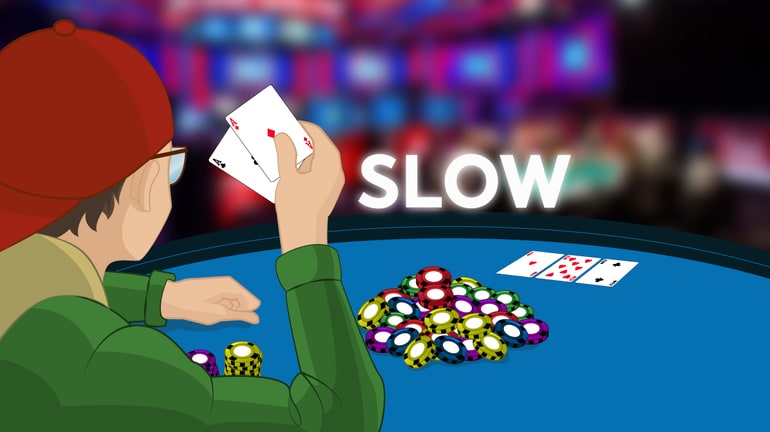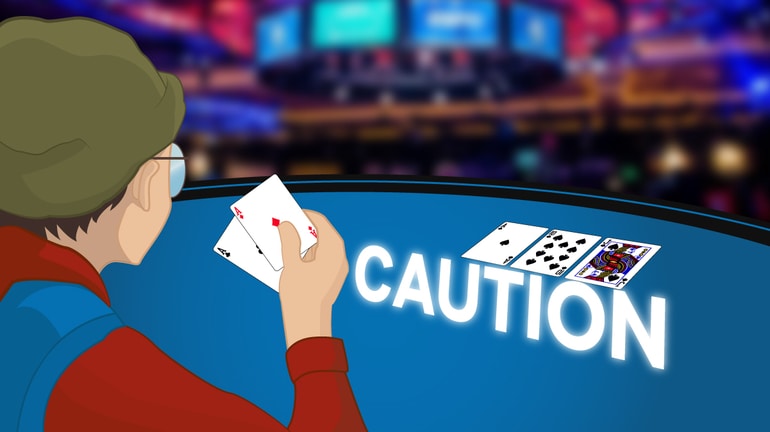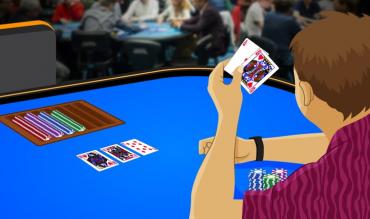It’s a great feeling to be in the driver’s seat when playing poker. Your two cards have added a perfect board, and now you’ve “flopped the nuts.” What does that mean? In poker, “the nuts” refers to the best hand possible, at any given moment, and could result in dollar signs by the time you’ve played the hand completely.
You’ve hit the best possible hand at that moment in the game and are in a comfortable position to win the pot. There are numerous variables a player may consider and events that could play out in a scenario like this. How a player takes advantage will affect his ultimate payout and success at maximising profits in a situation like this.
Here are some ideas to keep in mind when you flop the nuts.
#1 – Bet Out for Value
One of the most natural options for players who flop the nuts is obviously to make a bet. A player hitting the nuts with no apparent signs of trouble may choose to make a bet, at a later stage. The size of that bet would depend on the opponents and their possible ranges of hands. Those players with top or middle pair may be willing to call a few bets, even possibly call on the river to against opponents with superior hands.
Betting may also force out a few hands in multiway pots so that others who might draw out on you pitch their hands (more on that below). Those with backdoor flush or other draw hands might decide it’s not worth it and choose to get out. A wet board with flush or straight possibilities that could beat you on fourth or fifth street may require a more substantial bet to discourage players from calling, or at least,charge them a bit for doing so.
Betting also just makes sense to build the pot. More often than not, bet the best hand and don’t get too fancy. Players accustomed to continuation bets may believe that’s part of your game and may call to see another card. This kind of thinking from opponents only means more profits for you.
#2 – Slow Play for Value

Another option is to slow play a big hand. A player with A♦A♣would be pleased to see a flop of A♠8♥2♣. This player has hit the nuts and is in great shape on a fairly dry board. No flush or open-ended straight draws are available to opponents, at this point and a big bet might send inferior hands into the muck.
Some savvy play might help a sharp player cash in on extra chips. This player might prefer to check and let others bet, disguising the strength of his hand. A check-raise might be appropriate, either here on the turn. A player with A-8 for two pair or even A-10 might be tempted to call.
As 888poker magazine notes in “27 Poker Tactics to Crush the Poker Tables” by Matthew Cluff:
“Many players are easy to play against because they always choose to bet or raise their strong hands, and check or call with their draws or marginal made hands. This strategy makes their hand ranges and betting lines easy to play against and super readable. By including some of your strongest hands into a checking range, from time to time, you help balance your checking. Also, note that checking doesn’t necessarily mean check-calling either. Check-raising is undoubtedly a possibility too.”
Mix your play up in this regard, and you can reap some sweet rewards. Aggressive players in our scenario above are more apt to fire at a pot, even possibly on the turn, and offer a chance at extracting more chips.
#3 – Things Can Change
One thing to remember when you flop the nights is that things can change on a turn of the card. Your hand may be the nuts for now, but that can change, depending on the turn and the river. For example, a player with 7♣7♦ would undoubtedly be happy to see a flop of 2♠3♥7♠.
This player has flopped the nuts by hitting trips. No other hand has him beaten, at this point. Whether this player decides to bet, check-call or check-raise to slow play, he must realise that while he has the nuts now, that can change on the turn card. An additional spade on the next card suddenly brings a flush into play and could turn his big hand into a big loser.
Seeing a 4, especially the 4♠, on the turn brings about another tight situation. Suddenly players with A-5 and 5-6 can beat your hand with a straight. That 4♠ now puts both straights and flushes into play, and you’ll have to adjust accordingly based on the player and his possible range of hands. It’s important to realise that you may have the nuts now, but those can get cracked.
#4 – Hope for Another Big Hand from an Opponent
When players flop the nuts, it’s good to consider what others might be holding and the hands they may have also hit on the flop. Taking note of a player’s action after the flop might offer some interesting insights about where he is in the hand. For example, you might have A♥K♥ in early position and put in a raise. With one player calling on the button, you see a flop of K♣K♠A♦.
You’ve flopped a full house, and while this isn’t the nuts, only pocket Aces can beat you. While this isn’t impossible in this situation, it seems unlikely. You can decide to slow play or make a bet. In this scenario, it might be best to check and see what happens. A player holding an Ace may choose to fire at the pot. Someone with A-Q or A-J would be in some real trouble here.
Even better, a player who chose to call with K-Q or K-J may be thinking he has a chance at a massive hand, and your full house is in even better shape because these players may be willing to call off bunches of chips. Gauging what big hands opponents might have helps in bringing home even heftier pots.
#5 – Reel In Maximum Profits

“Feeler” bets (bets that can help determine what an opponent has) on the flop may help a player with the nuts establish where they stand. A wet flop doesn’t mean your opponents have cards that connect to it at all. Despite possible flush or straight draws, an opponent may only have top or middle pair and is willing to call in hopes you missed your hand.
In this case, a player is in a good position here. These types of calling stations can offer a chance at a nice pot. Make some properly-sized bets on the flop, turn, and river to be rewarded. A few opponents may even be willing to bluff at a pot or mix in their raise to gauge the strength of your hand. Don’t be deterred, in these instances, and continue to build the pot.
Barring an unfortunate runout, you should be in a spot to take some nice chips off opponents in these circumstances. Having a read on opponents in situations like this can be very helpful as well as having a fundamental grasp of bet sizing.
#6 – Isolate and Eliminate Players
Flopping the nuts is one thing but allowing other players to outdraw you can only lead to lost chips and a crippling turn of events. In a hand where several players have seen the flop, some may find an incentive to call small bets and see what develops on the turn. For example, you might have 7♦7♠ and see a flop of 7♣2♠3♥.
On this flop, players holding overcards may not be willing to continue and fold to decent-sized bets. A player with a hand like A♦2♠ may also be prepared to toss this hand. Another player on the small blind of big blind may find a hand like K-2 of J-3 doesn’t offer enough value to stay in the pot.
These hands aren’t necessarily significant concerns. But ones like A♣4♣ (or any other mixed combination of clubs), 4♣5♣, 5♣6♣, and others with straight and flush draws could have some drawing power and present problems. Betting big to elicit a fold, especially in tournament situations, might help in averting disaster.
Slow playing or betting small could not only allow drawing hands to get there but also open the possibility of a player getting lucky with runner-runner cards to break your hand and suffer a costly loss.
#7 – Don’t Be Afraid to Fold on Bad Turn or River Cards
Flopping the nuts is always great, but smart players can recognise when an opponent has caught up with them and taken the lead. As 888poker’s Matthew Cluff notes:
“Many recreational players struggle with being able to fold big hands when the situation calls for it. They bleed out money unnecessarily by having an inability to fold such hands when they should.”
Let’s take a look at a player who has been dealt J♠9♠ and is able to see a cheap flop with two other opponents. A flop of 8♥10♦Q♦gives you the nut straight but could be problematic depending on the turn and river.
Making a decent-sized bet may send one player’s hand to the muck, but a tricky turn card like K♦ may have you tapping the brakes a bit. Now with three diamonds on board, a player with a flush draw may have hit. A player with a hand like A♦K♣ or other drawing hands now has some incentive to stay or even make a big semi-bluff. A player holding A-J would have even hit the nut-straight and may be looking to raise to get rid of flush draws.
Another diamond on the river puts you in an even more precarious position. Four diamonds and a player that has called or raised on the turn isn’t good news here. Checking may not be a good sign of strength but remains an option. A bet with a raise from an opponent is also bad news.
Folding that sucker straight that began as the nuts could undoubtedly be appropriate here and save some much-needed chips in the long run.
*****
Flopping the nuts is always good and can deliver a sizable increase to a player’s chip stack. But adjusting and using some deep-level thinking will help smart players maximise profits and see their tournament or cash game success grow.


